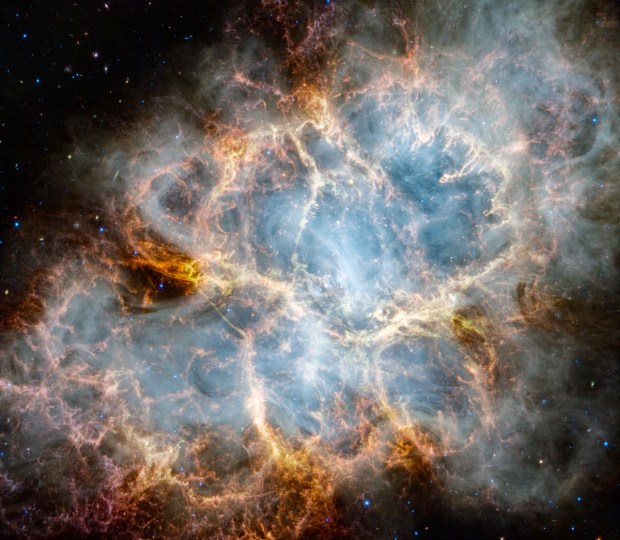
NASA, ESA, CSA, STScI, Tea Temim (Princeton University)
The James Webb Space Telescope (JWST) turned its attention toward the Crab Nebula (M1) and revealed “exquisite, never-before-seen details” in this image released Oct. 30.
Tea Temim and team at Princeton University used the space-based telescope’s NIRCam (Near-Infrared Camera) and MIRI (Mid-Infrared Instrument) to capture the new image of the supernova remnant 6,500 light years away.
“Webb’s sensitivity and spatial resolution allow us to accurately determine the composition of the ejected material, particularly the content of iron and nickel, which may reveal what type of explosion produced the Crab Nebula,” Temim said in a release.
The Crab Nebula — “one of the most famous objects in our sky” — is a cloud of dust and gas left over from a massive star that went supernova about 7,470 years ago. That light was observed in 1054 and the nebula left behind, which required telescopes to spot, later got its name from William Parsons in 1844. Parsons thought it looked like a horseshoe crab.
The Hubble Space Telescope captured what Astronomy.com called the “best Crab image ever” in 2005. NASA’s new images released Oct. 30 have done that one better and include this Hubble and JWST side-by-side comparison:

